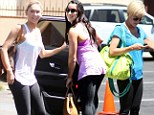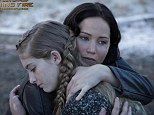As Call The Midwife nears a new decade, FEMAIL looks back at midwifery during the Swinging Sixties
- Third series of hit show planned for 2014
- Sixties onwards saw radical changes in midwifery
- Hospital births rose in popularity over home births
- Email femail@mailonline.co.uk with your memories
|
With its portrayal of life and labour in the 1950s, two series of BBC drama Call The Wife have been a huge success. But now viewers are hooked and keen for series three, producers have a slight problem - they've used up all the stories from the memoirs of midwife Jennifer Worth on which the series was based.
But with the last episode ending in 1958, the third series - which has been confirmed for 2014 along with a Christmas special - could move into the Sixties.
Just like in Mad Men, where moving the action at an advertising agency on from the Fifties to the Sixties breathed new life into the show, taking Call the Midwife into a new decade could explore a whole new realm of social history.

Hit show: Call The Midwife portrays midwifery in the 1950s when home births were the norm. But changes are afoot for the characters in the 1960s...
So what was life like for midwives in the Sixties?
For those who were used to the Fifties era portrayed in Call the Midwife, major changes were afoot.
As seen on the show, many midwives would travel by bike to home births with all their essential equipment in one leather bag they could carry on the back of their bicycles.
But by the late Fifties, gas and air that was inhaled through special apparatus during contractions was becoming more popular as pain relief. However, this apparatus was too cumbersome to travel with by bike.

Pedal power: Midwives would cycle to their patients in the 50s with everything they needed in a bag on the back - but medical advances and the need for more equipment meant this became more difficult in the 60s
In 1959, the Minister of Health was quizzed by an the MP from Stoke-on-Trent on when the government was going to provide motor vehicles to midwives in place of bikes so they could transport gas and air more easily. The minister replied that it was a 'question for local authorities'.
But this was not an option that was fully explored as the tide began to turn against home births and hospital births - often led by male physicians - became more much popular.
Hospital births where life-saving medical intervention could be taken if there were birth complications began to be seen as much safer and traditional midwives were sidelined.

Fashion forward: In the Sixties, midwives were allowed to wear trousers as part of their uniform

No men allowed: A typical labour ward in the 1960s were men were not allowed to be present for the birth of their child
In 1970, the Peel Report
recommended that all births should be carried out in hospitals.
The Sunday Express Baby Book, published in 1950, described a typical hospital birth in the following gentile way: 'In the delivery room, white with bright lights, you will be taken from a hospital trolley to the delivery table. The nurses will be standing by with the doctor and with their gentle help and encouragement, aided by the science they have studied so long, your baby will be born.'
One in three births took place in homes in the Sixties but by the Seventies, the majority of births were on labour wards.
Maureen Hiles, 61, from Romford, Essex, who was a midwife in the Seventies, recalled in The Sun: 'By the time I qualified, home births were a thing of the past. Pretty much everyone gave birth in a hospital and they would remain there for five or six days. In the case of a Caesarean, it could be up to ten days. And there was no such thing as an epidural.'

Radical change: By 1970, home births were becoming obsolete and most babies were born in hospital
Procedures such as shaving and enemas that were used in home births in the Fifties remained for hospitalised patients in the Sixties and Seventies. 'It was all part of the course and people just accepted it. It was done
to prevent infection but I think, if anything, it probably made things
worse,' Mrs Hiles said.

Nursing tales: Jane Yeadon recalls life as a midwife in her book 'It Shouldn't Happen To A Midwife!'
She added: 'Hospitals were seen as the best and the safest place to give birth. Personally, I thought home deliveries were much more personal. It would involve the whole family. It was easy, everything was much smoother.'
There was also a change in fashion for midwives in the Sixties as they were allowed to wear trousers as part of their uniform for the first time.
For home births and hospital births wearing a mask across their face was a must. But Call The Midwife's consultant midwife Terri Coates said they dropped this element from the show because 'masks don't make for great television!'
Giving birth in hospital in the Sixties had one huge difference to today - fathers-to-be were banned from being present.
As Jane Yeadon, a midwife in the Sixties and author of It Shouldn’t Happen To A Midwife, said: 'Oh my goodness if men went into the labour ward they were treated as if they were surplus to requirements.'
Yeadon explains in her book that attitudes to unmarried mothers were also very different then.
Nurses would refer to such babies as 'illigits', and both they are their mothers would be segregated from the married mothers and their newborns.
'When I look back I can’t actually believe we did that,' she said.
Using drugs for pain relief also became much more popular in the Sixties and Seventies with physicians often using forceps to deliver babies whose mothers were in a drug-induced sleep.
Some people were unhappy with how medicalised giving birth had become and support grew for home birth movements. The characters of Call the Midwife could well be seen supporting these movements in future episodes as their methods of delivery start to become obsolete.
What was your experience of giving birth in the Sixties and Seventies? Were you a midwife or did you work on a maternity ward during these decades? Send your pictures and stories to us at femail@mailonline.co.uk and they will be featured in a future article
-
 'Gang-rape victim', 17, kills herself 'after her attackers...
'Gang-rape victim', 17, kills herself 'after her attackers...
-
 Can you believe these are actually apartments? The stunning...
Can you believe these are actually apartments? The stunning...
-
 Bubba Watson shows off his adorable baby boy as he prepares...
Bubba Watson shows off his adorable baby boy as he prepares...
-
 Man gets shock of his life when he buys two toy poodles for...
Man gets shock of his life when he buys two toy poodles for...
-
 Police uncover incredible 'homeless city' where group of...
Police uncover incredible 'homeless city' where group of...
-
 Waterworld: How America's cities will look in five centuries...
Waterworld: How America's cities will look in five centuries...
-
 'She died saving her': How hero mom fought back against...
'She died saving her': How hero mom fought back against...
-
 Buyers paying higher percentages of their income for new...
Buyers paying higher percentages of their income for new...
-
 Jenna Jameson 'used brass knuckle iPhone case to beat up her...
Jenna Jameson 'used brass knuckle iPhone case to beat up her...
-
 'I murdered 115 people on orders of North Korea': State's...
'I murdered 115 people on orders of North Korea': State's...
-
 Jobless mother-of-10 vows to keep having more babies despite...
Jobless mother-of-10 vows to keep having more babies despite...
-
 Doctor pleaded for her life as she was strangled by...
Doctor pleaded for her life as she was strangled by...












































































































































































































My mother was a midwife in the sixties and the move away from homebirths began long before then so any programme set at that time, with any pretence of accuracy, is going to be based in an hospital environment.
- Jamie , Twickenham, United Kingdom, 09/4/2013 17:51
Report abuse